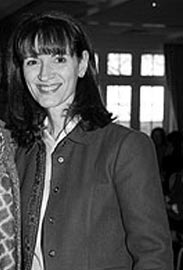Are you If not, could you forward this site to this person? |
|
 |
 infomore |
I have done this site especially for Regina Gabelli |
| |
Regina is wife of Mario Gabelli (American stock investor, investment advisor, and financial analyst. He is the founder, chairman, and CEO of Gabelli Asset Management Company Investors)
 |
 |
 |
Sorry for my poor english translation.
Mario Gabelli: The Man Who Loved the Media
* Chronicle of André Gosselin published on the portal The Affaires.com
The media and communications through the dark days. Whether the side of the telecommunications, cable, telephony, media, television, film or radio, you can not say that the expected profits and both are expected to visit. Advertising revenues are falling and the adventure of convergence does not seem as "synergistic" than previously thought for the ECB, Quebecor, AOL Time Warner, Vivendi and others.
Still, some professional investors continue to find in this world of excellent buying opportunities. At their head is Mario Gabelli, known in the United States as the largest specialist in that area.
Mario J. Gabelli, founder of Gabelli Asset Management Company, manages a small financial empire that became public in 1999 after 22 years of existence. This man, who modestly began his career as an analyst of the auto parts sector, is already a living legend of the investment. It has also called on Wall Street, Super Mario, a nickname based on the popular video game.
The oldest mutual fund managed by Mario Gabelli's firm (Gabelli Asset) achieved an average annual return of 14.6% in the last 15 years, comfortably surpassing the performance of 13.4% of the S & P 500 .
Gabelli has built his reputation and his fortune thanks to his knowledge of the communications industry, and it does not intend to desert the Eldorado financial downturn due to cyclical and temporary. Bill Gates, who also knows very well the sector, recently entrusted the management of billions of dollars of his personal fortune. Microsoft founder sees great potential in all the media and communications, and he knows that his friend Mario is by far the best investor who is in this area.
Experts in financial analysis, Mario Gabelli is recognized as the inventor of the concept of "private market value" (value on the private market), a notion he popularized in the late 70's, following the bear market of 1973-1974.
According to Super Mario, investors should adopt the perspective of a potential buyer of a company and ask what would be its value if the stock were to close overnight and suddenly they became private owners of the company in question.
We must return to basics to determine the value of a company, he said. If the share price of company X in the stock market is $ 10, we must seek to establish the value in the private market based on cash, accounts receivable, inventory and assets outside balance sheet as goodwill, the value of the franchise and profit potential. Then one must ask how a contractor would pay to acquire warned such an undertaking.
Great used the round table that organizes the weekly Barron's each year with the big American investment guru, Mario Gabelli is still the most generous of the guests on the number of securities it recommends to investors. A university study published in 1995 showed that the recommendations of Gabelli Barron's readers have generated excess returns to normal by 8.6% over a period of 12 months, and 16.4% when the period of holding of securities spread over 24 months.
-> Site for Regina Gabelli, Regina Pitaro
Because it is so bad for two years, the media industry is poised for a good year in 2002, Gabelli thinks. The merger and acquisition will be especially profitable for the investor who knows how to identify good players. Especially since the Federal Communications Commission is more open than ever for mergers and cross-ownership. The chairman of the regulator, Michael Powell, a Republican is in good taste, which is surrounded by a good majority of members favored a consolidation of the media industry.
Gabelli is well aware that the market value of certain communications companies could double if they were subject to an acquisition. And given that his company may hold more than 25% of the shares of these companies, you can be assured that Gabelli will do everything in its power to good transactions take place in the interests of shareholders.
----
Mario Gabelli's company lagging behind
Since the low point of the market in early 2003, the net result of Gamco, the management company of Mario Gabelli, has increased by only 5% to 56 million, reports the Wall Street Journal. One problem is the sluggish growth of assets under management, a key driver of results. The remuneration of Mario Gabelli also weighs on profits. In 2008, Gamco outstanding fell by one third and net income stood at $ 25 million. Still, Mario Gabelli has received $ 46 million in cash. The WSJ also notes that a potential buyer will have to assess what the company will be worth without Mario Gabelli, now 67 years old.
---
-> Created for Regina Pitaro, Regina Gabelli
Mario Gabelli is attending for the first time
Gamco Investors ($ 21.4 billion in assets) announced the appointment of Kevin V Dreyer as associate portfolio manager of Gabelli Asset Fund for the (2 billion), the first funds available to the public of Gabelli Funds, launched in March 1986. He joins Mario J. Gabelli was the only manager since inception, to manage a portion of the assets. This is the first time that Mario Gabelli shares responsabilicé management of the Fund. Kevin Dreyer entered into in June 2005 as an analyst at Gamco research.
----
-> Site for Regina Gabelli, Regina Pitaro
The value-oriented investors are looking for the chrysalis stage actions just before it turns into a butterfly
One can believe that a good fund manager seeks to buy shares that offer "good value", but the concept of value is ultimately very subjective and depends on the definition given by the buyer and his personal philosophy in investing. For managers who design portfolios of equities, two fundamental philosophies, styles and basic rub on investment - one value-oriented and the other on growth. Each style draws the attention of investors in securities and control of different price ranges to buy and sell distinct (optimal). Proponents of the "value" or "growth" believe that their style will produce a performance that will outperform the market. (Some combine the two philosophies in a style they call "GARP" - growth or growth at reasonable price at a reasonable price.) Look at one of two major philosophies, investment style "value-oriented."
The value-oriented investors have been called "fundamentalists", "intrinsic value buyers" and "buyers in the private market value." They often invest against the tide and follow the advice of Pudd'nhead Wilson, the character created by Mark Twain, who said, "Put all your eggs in one basket - and do not forget." They also compared to the bargain hunters who roam the basements of department stores and for whom there is nothing like a closing balance. The value-oriented buyers looking for the hidden beauty in the chrysalis in the hope that the butterfly is about to spread its wings.
Normally, the so-called value shares have the key attributes:
· They have low price / earnings ratio.
· They generate discretionary cash flow.
· They do not generally favorably with the market and, therefore, are unknown.
· They are sold at a price below their intrinsic value and, often, the value of working capital of the target company.
· They conceal unrealized capital gains.
· They are frequently disregarded financial analysts.
-> Created for Regina Pitaro, Regina Gabelli
To better understand these terms, the reader is referred Investment Gurus by Peter J. Tanous, published in 1997 by the New York Institute of Finance. Easy to read, the study explores the world of value-oriented investors through interviews with people like Mario Gabelli, a crack legendary stock selection known on Wall Street as the Super Mario. Mario Gabelli, in the service of a house which manages over U.S. $ 10 billion, said he coined the term private market value (value on the private market) in the late 70's following the bear market of 1973 -1974.
According to Super Mario, investors should adopt the perspective of a potential buyer of a company and ask what would be its value if the stock were to close overnight and suddenly they became owners of the company question. "We went back to basics to determine the value of a company, said Mario Gabelli. If the share price on the stock market is $ 10, I seek to determine its value in the private market it based on cash, accounts receivable, inventory and off-balance sheet assets such as goodwill, the value of the franchise and profit potential. Then I wonder: How an entrepreneur warned it would pay to acquire such a business? What would the value of the company if it were a private company? How would we be willing to pay to buy and why? "
-> Site for Regina Gabelli, Regina Pitaro
The value-oriented investors also use the term "intrinsic value". This concept was put forward by Ben Graham, the most famous of value-oriented investors in his classic on the investment, Graham and Dodd's Security Analysis Cottle Principles and Technique, published in 1962 by McGraw Hill. After Ben Graham's retirement, Roger Murray, a former student, took over at Columbia University in New York and became co-authored the current edition of the Treaty. Roger Murray said that the intrinsic value is not from the share certificate, but the value of a company based on its earning power. When an investor tries to predict growth and profitability of a company, the most important is the accuracy of its estimates, but its ability to determine the degree of undervaluation or overvaluation of the it. And Roger Murray added: "If it is possible to specify the underlying characteristics, we can draw some reliable conclusions about growth expectations, consistency and profitability. And then, the evaluation does not cause a problem, since all answers are present. "
Warren Buffet, a disciple of Ben Graham and himself famous value-oriented investor, defined as the intrinsic value of species that can be gained for the company during its remaining life. The intrinsic value and, therefore, the discretionary cash flow are the essential attributes of a value-based purchasing. According to Warren Buffet, "the price is what you pay and value is what you get. These two realities do not overlap very often, but most people rarely receive only the difference. " This view led Warren Buffet and his supporters to state the "principle of the margin of safety" that should not make an investment in a title if you have no reason to believe that his price is considerably lower than the intrinsic value it offers.
-> Site for Regina Gabelli, Regina Pitaro
Value arising from interest and brand value
Several U.S. studies, including the June 1992 survey conducted by Professors Fama and French from the University of Chicago, have shown that there is an inverse relationship between price / book value and dividend yield. From 1963 to 1990 - while the market was offering a yield of 14.56% - the companies with the price / book value among the lowest have provided a return of 21.36%. This trend was reversed during the 90s. Since 1995, the yield of 32% growth stocks outperformed the 25.4% value stocks, said Jeffrey
Laderman in an article in the June 14, 1999 issue of the magazine Business Week. He noted that: "The traditional measures used by investors value-oriented actions to choose the stars who appear in the credits of their portfolios, such as low price / earnings ratios and price / book, give the wrong answer."
The value-oriented investment there still a place in the new economy? Of course, provided they are highlighted with the adjective "new." Jeffrey Laderman argues that an improvement to the original method has recently emerged, mainly following the work of John Burr Williams. The new value-oriented investors are not afraid to predict cash flows (a practice that has long been seen as heresy because of its speculative nature).
In his presentation, Theory of Investment Value, published in 1997 by Fraser Publishing Company, John Burr Williams shows that the value of a firm equals the present value of future cash flows and growth rate - one component of discount rate - is the primary determinant of value.
-> Created for Regina Pitaro, Regina Gabelli
Show me the money!
While it is clear that the predictive approach has risks, the greatest risk is to ignore cash flow. Opportunities are emerging latent value when applying the filters by John Burr Williams - even when using high discount rates. William H. Miller III, portfolio manager at Legg Mason Value Trust, which manages U.S. $ 11.3 billion, likes to give some "latitude" by applying a discount rate of 30% to evaluate business as America Online Inc.. and Dell Computer Corp.., while using a rate three times lower for companies that have proven themselves as IBM. According to William Miller, investors focused on traditional values ??eventually hold only industrial companies because a prospective model they lack. It's obvious that in the new economy, if one puts aside the companies that derive their value from their knowledge or their franchise, we let go of the extraordinary opportunities.
-> Site for Regina Gabelli, Regina Pitaro
The value-oriented investments are also characterized by the "discretionary cash flow", defined as cash flow from operations less capital expenditures. In other words, it is the amount obtained after deducting all expenses, including those required for working capital - such as inventory, accounts receivable, etc.. Bruce Sherman, a history of a CPA accounting firm to a management company of private funds, explains how the discretionary cash flow help investors value-oriented "book value, for us, does nothing say. In the U.S., we wrote off the carrying amounts to outdo. Tangible assets may indicate under-utilized and under-valued returns. For this reason, we consider only the intrinsic value - or that someone would be willing to pay for a company in the private market, combined with discretionary cash flow the company generates. The ability to generate discretionary cash flow can serve as a common denominator to all companies, while the interpretation of earnings per share varies from one sector to another. "
Assets "strong" are not as relevant as the active "liquid", the tight management of debtors and stocks and funds to finance investments in intellectual property and marketing. Working capital and the ability to sustain growth are among the essential characteristics of a balance sheet. Similarly, Warren Buffet has not abandoned the style of value-based purchasing when he acquired an interest in corporate brand like Coca-Cola and Gillette. Instead, he joined the prospective analysis based on cash flows to the detailed review of the safety margins that he identified in a healthy working capital and other fundamentals.
For the foreseeable future, many utilities (including perhaps some of the major accounting firms) will be transformed into public companies - typically to a value in the range of one to two times the product statements. The prices of knowledge-based entities amounted to a record, even relatively small companies are bought by buyers bulimic (as American Express and H & R Block) or transform into companies at a rate of 1.5 times or more annual revenues. Normally, these values ??are based on an analysis of discounted cash flows, the brand value and the expected growth. Is this investment based on value or growth at a reasonable price? History will tell.
-> Site for Regina Gabelli, Regina Pitaro
Value to the new sauce
Several new models attempt to explain the investment value from intellectual capital, brand, or franchise or other intangibles:
The "Cornell model", developed from research on the value of the Dow Jones, is to update the expected cash flows and compare the result at the current prevailing on the stock market. If the value is higher then the market overestimates the action, otherwise, the action is a godsend. It attaches great importance to the choice of discount rate and especially to that of growth rate. The higher the growth rate is high, the lower the discount rate and the greater will be the present value.
(For more information, see "What is the intrinsic value of the Dow?" By Charles MC Lee, James Myers and Bhaskaran Swaminathan, pub-lished in the October 1999 issue of Journal of Finance, and "Valuing the Dow: A bottom-up approach ", by Charles MC Lee and Bhaskaran Swaminathan, published in Financial Analysts Journal, September-October 1999.)
In addition, the "model Glassman-Hassett," made by Kevin A. Hassett and James K. Glassman argues that the risk premium, traditionally estimated at 7%, tends to zero. If so, the discount rate is used for the evaluation of companies will decrease considerably, resulting in an increase in their fair value. (The risk premium for equities is 7%, but that of private equity is often the order of 17% or more.)
Exorbitant corporate values ??based on the Internet or other technologies are they really absurd? In most cases the answer is yes. But given the explosive growth enjoyed by companies who get the first success in this market, the exceptions justify the value-oriented investor is there serious attention. A prize may seem excessively high based on historical standards, but it could turn into windfall if the securities of General Electric Co., BCE inc., Northern Telecom Ltd., @ Home or JDS Uniphase Corp.. The trick is to discern the quality and growth opportunities - even in volatile areas.
-> Created for Regina Pitaro, Regina Gabelli